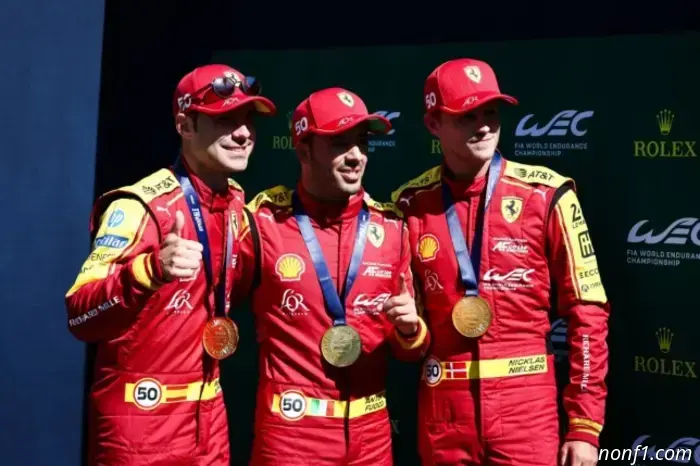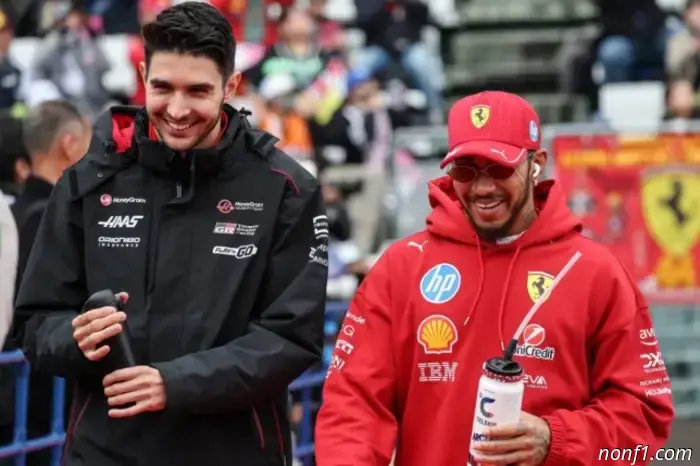
Bob Bell: The creation of a new chassis is just the tip of the iceberg
Aston Martin F1, like all other championship teams, is preparing for the very radical changes that are associated with the transition to new technical regulations. Bob Bell, the executive technical director of the team, spoke about the main features of the preparation process for 2026.
The cars will receive new power plants that will run on fuel completely extracted from renewable sources, and these chassis will feature very efficient aerodynamics.
Bob Bell: "Historically, when there was a change in regulations, it was either the chassis or the engine, and it was much less common for both areas to be affected. In 2026, a new regulation will come into force, which involves the transition to new power plants and new chassis. Nothing like this has happened for a very long time.
The most significant changes in 2026 will occur with power plants. The main indicator is this: 50% of the power will be generated by an internal combustion engine, 50% by a battery, and now this ratio is 80:20. We will abandon the MGU-H motor generators, which appeared in 2014, which significantly complicated the design of power plants and made them much more expensive.
If we talk about aerodynamics, the idea is that its geometry still allows cars to chase each other closely, but at the same time they should become less sensitive, less nervous.
We are returning to something more comparable to the times before the transition to the 2022 regulations, when the bottom of the cars was flat. Of course, everything is much more complicated, but the main difference is that the era of machines that are fully based on the use of the ground effect will end.
The behavior of these cars on the highway will be different. The main difference is in the very concept of how they will take turns and how to behave on straights. The behavior on straight lines will be similar to what happens when using the DRS system, but on new machines, the angle of attack of not only the rear wing, but also the front wing will change to reduce drag. Such a system can be called "super-DRS", and it will work on all straight sections and will be much more efficient.
In fact, we have to think about two different modes of car behavior – on straights and when cornering.… We are still at an early stage of development, intensively using computer simulation technologies, trying to understand how all this will affect the chassis design.
Starting in February, we have been involving Lance Stroll and Fernando Alonso in the development process of the car. It was then that they first got the opportunity to work on our new simulator and pilot a virtual model of the 2026 car. It is very important to get feedback from the riders at an early stage of the process – this is a key part of the chassis creation process.
It is necessary to properly allocate resources between the 2025 and 2026 programs and find the right balance. Whatever the rules, it's always difficult. Last year, we decided that the priority was to prepare for 2026, so many of the AMR24 components migrated to the AMR25 chassis.
The aerodynamics of the AMR25 have been completely revised, but what is under the body parts remains the same. I suspect that all teams use a comparable approach. We also have to plan very precisely the amount of chassis upgrades that are carried out during the season – our resources are mainly focused on preparing for the next season.
Until recently, we used the Mercedes wind tunnel at Brackley, and now we have our own modern wind tunnel, but it is very difficult to fully debug it in a short period of time. All this work is going on simultaneously with the development of the 2026 car.
In addition, our engine supplier will change, and we are very pleased to cooperate with Honda, for which we will become a factory team. We will have to start manufacturing new components – we are talking about the transmission, although the last year when this team had its own gearboxes was 2008.
We also have to create a new rear suspension, manufacture our own pit stop equipment, and independently develop various types of software. The ideology is this: you will never be able to get ahead of the team from which you purchase car components, because it will always be ahead of you.
Becoming a full factory team is a very difficult project, but it opens up the widest possibilities. Therefore, the preparation for 2026 implies a more ambitious program than "just" the creation of a new car. This is just the tip of the iceberg, and the main part of it is under water."
Other articles
 WEC: Three Ferraris will start from the top three positions at Spa
The third stage of the World Endurance Racing Championship is taking place in Spa this weekend, and the crews performing on Ferrari 499P hypercars delighted the fans again yesterday...
WEC: Three Ferraris will start from the top three positions at Spa
The third stage of the World Endurance Racing Championship is taking place in Spa this weekend, and the crews performing on Ferrari 499P hypercars delighted the fans again yesterday...
 Esteban Ocon: I can understand Lewis' difficulties.
Esteban Ocon says he understands the difficulties Lewis Hamilton has faced this season in adapting to the Ferrari car...
Esteban Ocon: I can understand Lewis' difficulties.
Esteban Ocon says he understands the difficulties Lewis Hamilton has faced this season in adapting to the Ferrari car...
 Safnauer on the "Max factor" and the McLaren advantage
Otmar Safnauer, who once led various Formula 1 teams, talks about the reasons for Max Verstappen's advantage over his teammates...
Safnauer on the "Max factor" and the McLaren advantage
Otmar Safnauer, who once led various Formula 1 teams, talks about the reasons for Max Verstappen's advantage over his teammates...
 Ferrari hopes for a change, but not before Barcelona
At the Barcelona stage, we can expect noticeable changes in the balance of power, and Ferrari has high hopes for this...
Ferrari hopes for a change, but not before Barcelona
At the Barcelona stage, we can expect noticeable changes in the balance of power, and Ferrari has high hopes for this...
 Vijay Mallya is racing again – historical
The racing press is writing about Vijay Mallya again, and the reason is this: the former owner of Force India is racing again, as in his younger years...
Vijay Mallya is racing again – historical
The racing press is writing about Vijay Mallya again, and the reason is this: the former owner of Force India is racing again, as in his younger years...
 Dan Tauriss: We don't want to be like others
Dan Tauriss, the head of TWG Motorsports, who is leading the Cadillac F1 team project, has not yet provided specific information, but at least shares his vision of the future...
Dan Tauriss: We don't want to be like others
Dan Tauriss, the head of TWG Motorsports, who is leading the Cadillac F1 team project, has not yet provided specific information, but at least shares his vision of the future...
Bob Bell: The creation of a new chassis is just the tip of the iceberg
Bob Bell, Executive Technical Director of Aston Martin F1, spoke about the main features of the preparation process for 2026...
